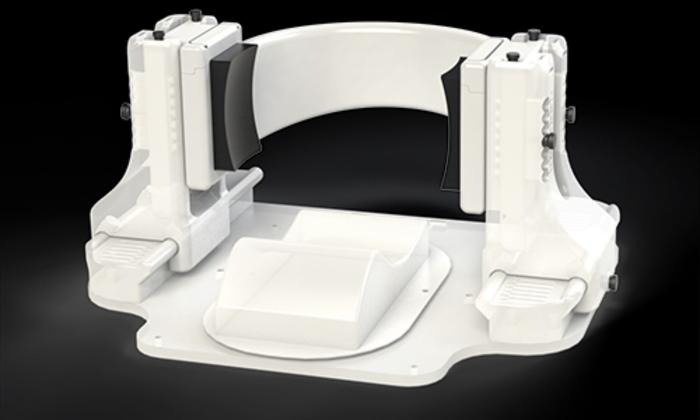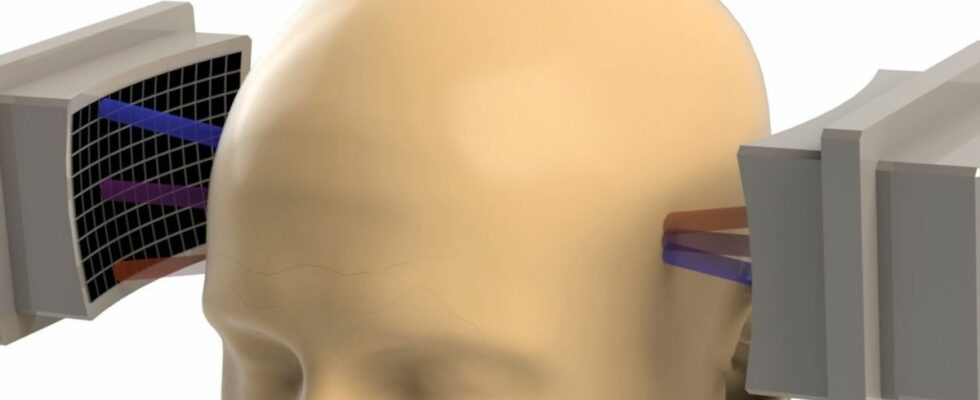Published on
updated on
Reading 3 min.
What if a simple 40-minute session could alleviate the suffering of millions of patients? That’s the bet of a revolutionary new device: a wearable headband that uses ultrasound to treat depression and chronic pain.
Developed by researchers at the University of Utah, the device has recently been touted as a major breakthrough in mental health and pain management. Early trial results are promising and offer new prospects for millions of people suffering from conditions that are resistant to traditional treatments.
Cutting-edge technology for fast relief
Chronic pain, often difficult to treat, affects nearly 20% of the world’s population, while depression affects about 5% of adults according to the World Health Organization. Both conditions cause considerable suffering and are sometimes resistant to conventional medications. To meet this challenge, a team of researchers from the University of Utah has developed a headband that emits focused ultrasound directly onto certain areas of the brain, with spectacular results.
In just 40 minutes, the device could reduce pain and improve patients’ mood. Unlike other treatment methods, such as electrical stimulation or heavy drug treatments, this approach is non-invasive and does not cause any serious side effects. Lead author of the study, Professor Jan Kubanek of Price’s Department of Biomedical Engineering, emphasizes the importance of this advance: “This technology could offer significant relief to those who have found no benefit with current treatments.”.
The principle of this device is simple but revolutionary. It is a wearable headband equipped with small ultrasound emitters that, once activated, precisely target the regions of the brain associated with the perception of pain and mood disorders. This treatment, known as neuromodulation, adjusts brain activity by acting directly on neural networks without surgical intervention.

Focused ultrasound has the advantage of being able to penetrate deep into tissues without damaging them, unlike some more invasive techniques such as deep brain stimulation. In clinical trials, participants reported significant improvement in their condition after a single 40-minute session, a speed of action that is rare in this type of therapy.
Promising clinical trials
The results of the first tests are exciting. In clinical trials conducted with small groups of patients suffering from chronic pain and resistant depression, a reduction in pain was observed after only one treatment session. In detail:
- Of the 20 patients in the chronic pain trial, 60% experienced a clinically significant reduction (over 33%) in pain immediately after treatment. No adverse events or worsening of pain were observed.
- Of the 19 patients in the depression trial, 58% met the criteria for remission within a week of a single stimulation session. Under special follow-up, one patient remained in remission for at least 44 days. Overall, 14 patients experienced sustained improvement while 2 patients experienced temporary worsening of depression.
Kubanek adds: “These are patients who have suffered for most of their lives, who have tried dozens of antidepressants with no relief, or who have been hospitalized multiple times for suicidal thoughts. So the results of this drug-free approach have been very gratifying for us as researchers.“.
“Honestly, this is probably the most meaningful work I’ve ever done.” says Thomas Riis, a postdoctoral researcher in the same lab.It’s rare to see your work come out of the lab and make such a clear and powerful difference in people’s lives.“.
Towards a portable, accessible solution without side effects
These results are all the more remarkable given that current treatments for depression, such as antidepressants or electroconvulsive therapy, can take weeks to produce effects and often have serious side effects. Similarly, these treatments could also help reduce the use of opioids, which are commonly prescribed for chronic pain but carry a high risk of addiction.
The other exciting aspect of this innovation is that it could soon be available as a portable device for use at home. With large-scale Phase 3 trials on the horizon – the final step before the FDA approves Diadem as a treatment for the general public – this impact is only expected to grow. If these studies are successful, the device could be commercially available in the coming years.
Unlike hospital treatments or those requiring constant medical monitoring, this headband could be worn several times a week by patients at home, allowing unprecedented autonomy in symptom management.
